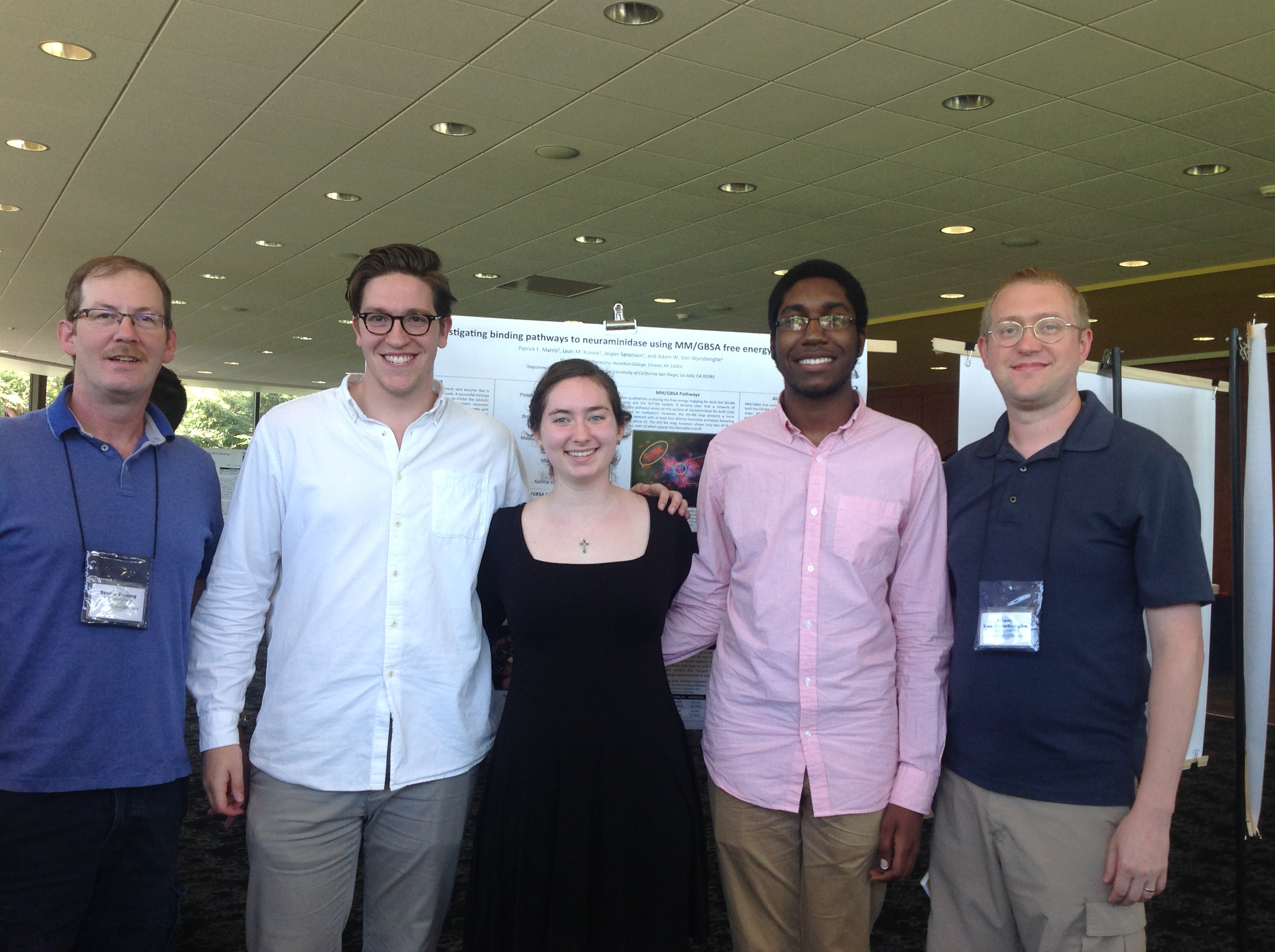
Patrick Marris ’16, David Dacres ’18 and Erin Lewis’18 presented the results of their summer research projects during the 14th annual Molecular Educational Research Consortium in Undergraduate computational chemistry (MERCURY) conference. The conference was held July 23-25 at Bucknell University.
The students were members of Associate Professor of Chemistry Adam Van Wynsberghe’s research group that studies the ligand binding kinetics of neuraminidase, the main antiviral target of influenza. Each student presented the results of their nine-week summer research experience in a short oral presentation and in poster format. The students’ research was supported by The Edward and Virginia Taylor Fund for Student/Faculty Research in Chemistry, NSF MRI-R2 #0959297, and Hamilton College.
Marris’ presentation, titled “Investigating binding pathways to neuraminidase using MM/GBSA free energy analysis” also included Leah Krause ’14 as a co-author.
Dacres’ presentation was titled “Investigation of Sialic Acid Association Kinetics to H274Y Neuraminidase Using Molecular Dynamic Simulations” and included Marris and Jordan Graziadei ’15 as co-authors.
Lewis presented “Examining the Binding Pathways of Oseltamivir to H274Y Neuraminidase.” Marris and Rich Wenner ’17 were co-authors.
In support of the students, Professor Van Wynsberghe and Steve Young, Hamilton’s Unix and HPC system administrator, also attended the conference.
Funded by the National Science Foundation (NSF MRI #1229354), MERCURY is a consortium of 17 chemistry professors at 15 primarily undergraduate institutions across the country that share computational resources. The group hosts its annual conference with a focus on theoretical and computational chemistry research conducted by undergraduates.
The Van Wynsberghe lab studies protein flexibility and dynamics along with ligand binding kinetics using a variety of computational and theoretical techniques. The lab’s goals are to develop and utilize molecular simulation methods to investigate biological and biochemical systems from a physical and chemical perspective.
